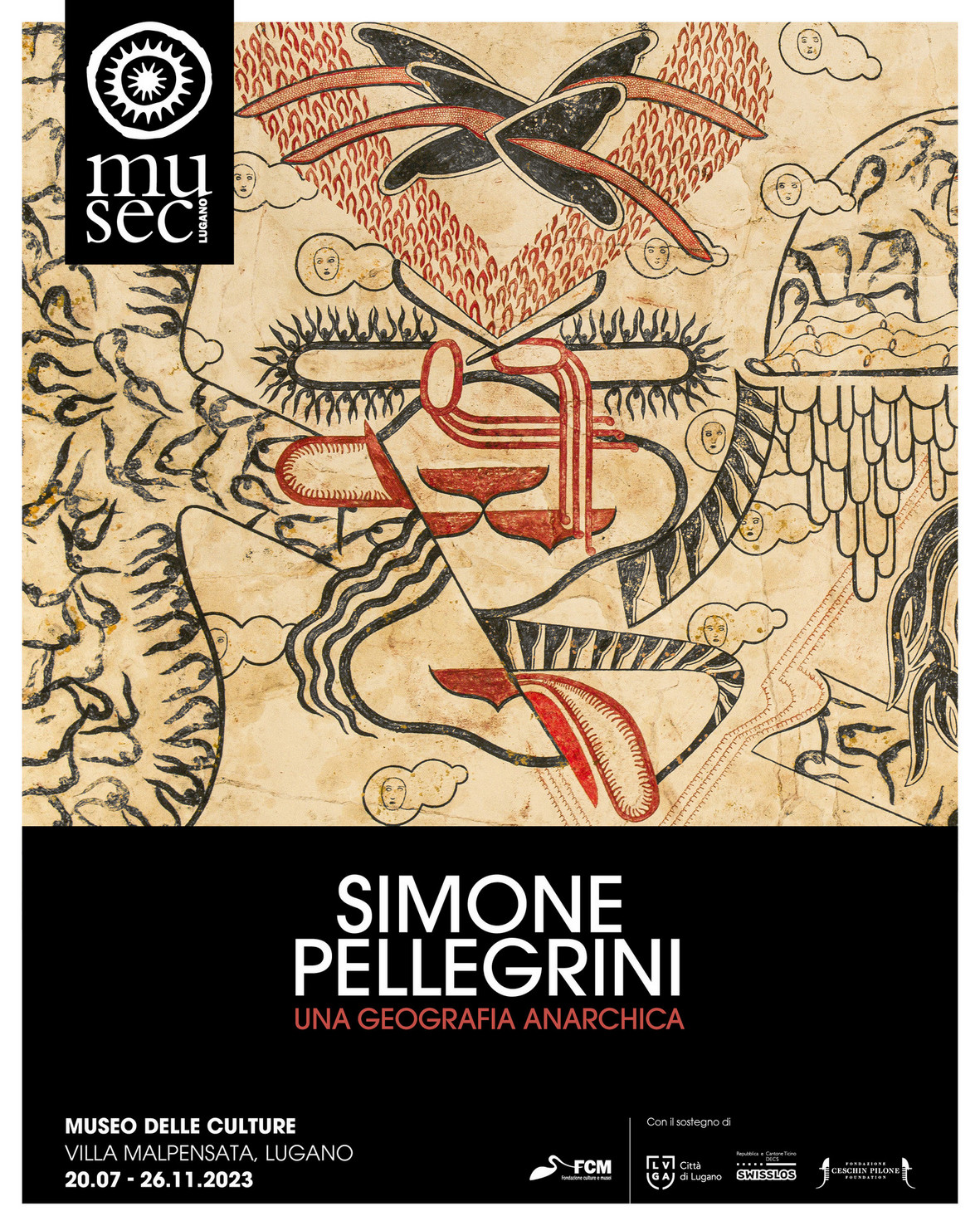Museo delle Culture uses cookies to improve the user experience. If you need more information click on the privacy page. Privacy policy X
20 July 2023 - 26 November 2023, VILLA MALPENSATA, SPAZIO MARAINI
The MUSEC exhibition, curated by Francesco Paolo Campione and Nora Segreto, presents 12 large-scale works created by Simone Pellegrini (Ancona, 1972) between 2007 and 2022. Pellegrini's pictorial investigation is aimed at the search for a new alphabet made of shapes and signs, that he imprints on large sheets of dusting paper with self-produced matrices. Sources of his creative inspiration are the philosophical, mystical, scientific and poetic writings that he consults and that release the imagery of his inner world.
The compositional process starts already from the creation of the support that Pellegrini makes starting from virgin paper, reduced into small parts and then recomposed as to obtain a new and unrepeatable base of work. Each paper matrix made by the artist – drawn in charcoal, coloured with pigment and finally oiled to allow for the correct transposition of the motifs – creates a single form; used only once and then cast, it generates unique elements. Juxtaposed with one another, the marks imprinted on the large sheets form visionary and timeless cartographies that evoke mystical iconographies, archaic landscapes, cosmogonies, ancient alchemical, esoteric, and mythological codes. Pellegrini's large maps are the slow development of a symbolic grammar in which each element enters into dialogue with the others. Wakes of cellular organisms, phytomorphic life forms, segments of anthropomorphic creatures are fragmented or merged, transformed into a new life.
The exhibition set up in MUSEC's Spazio Maraini presents, in addition to the 12 wall works, an installation composed of numerous matrices placed on the ground under the larger work, and set up as if they had fallen after transposing the sign onto the support. In addition to the short captions, the works on display are accompanied by some quotations from the conversation held on May 27, 2022 by the artist with Francesco Paolo Campione: short aphorisms derived from a critical dialogue in which Pellegrini has expressed some of the main themes of his aesthetics.
An English-language catalogue published by the Culture and Museums Foundation in its "Global Aesthetics" series accompanies the exhibition.

.jpg)
Born in 1972, Simone Pellegrini's career began around the mid-1990s, during his formative years in Urbino. Originally from the Marche region in central Italy, he currently lives and works in Bologna, where he teaches painting at the Academy of Fine Arts and where his very special home-studio is based.
To his credit he has more than forty solo exhibitions, and starting 2003, the year in which he won the "Premio Lissone," the first of many awards, a long season of successive exhibition opportunities, publications and fairs between Italy and abroad was inaugurated. From the beginning of his path, the pictorial research is combined with that of connoisseur. Starting from dusting paper – of the pages of the texts he chooses as objects of study – and going back to this material of choice and surface of the definitive works. Preliminary pencil compositions arise on the title pages of books and constitute the sketches that guide the realization of matrices, individual small papers containing the characteristics of each element that will then be transferred to the large format, by analogical procedure through manual impression. His sign has always been recursive and is made up of forms and formulas evolved over time, which he assembles and brings to life together in a stroke of colour: namely, the red that has connoted him since the early 2000s and the charcoal black that contours the irregular limits of the large papers, identifying his singular artistic personality. Just as in his works the space is irregular, marking the end of one episode and at the same time the beginning of the next, the multiplicity of his interests reveals, as it has been defined, Pellegrini’s 'anomaly'.